I never used to read nonfiction. I’ve always said I learn more from a memorable story and characters than from a recitation of facts. And that’s still true, but over the last two years I’ve really come to appreciate nonfiction. Last year I read a record (for me) 11 works of nonfiction, because of, well, Trump. There’s so much I need to understand, need to be aware of. At the same time, nonfiction has helped me learn a few things about myself as well.
This year I signed up for Doing Dewey’s Nonfiction Challenge. I proposed to read 12 nonfiction books this year, and I’ve already read 15. And those have been quite diverse, in both topics and format. Two of them, Persepolis and March, are memoirs in the form of graphic novels. My nonfiction reads have taken me to India, Greece, Iran, and Serbia. And Just Mercy, Educated, March, and Killers of the Flower Moon took me to parts of my own country I know little about.
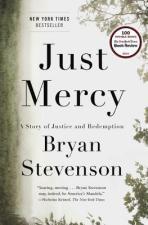
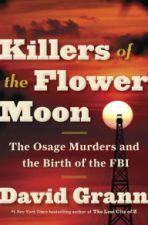
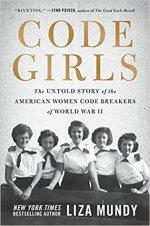
The more nonfiction I read, the more I see books I want to read. There are quite a few nonfiction books I’m interested in, including In the Shadow of Statues, Janesville, Awkward, The Secret Life of Pronouns, Nasty Women, The Line Becomes A River, The Immortal Life of Henrietta Lacks, How Dare the Sun Rise, What Happened, To Siri With Love, The Brain that Changes Itself, Born Survivors, and If I Understood You Would I Have This Look on my Face?
And then there’s all the Hamilton-related books – I saw the play this weekend and I’m ready to dive in to Chernow’s book and some of the others on this list.
The choices are vast and adding nonfiction has increased my TBR exponentially. How do I choose the nonfiction books I want to read? What I’m most interested in these days are 1) the U.S. political situation; 2) race and criminal justice; 3) language, communication, and the brain; and 4) understanding the history of my country and other countries.
I find non-fiction particularly challenging to review. Memoirs are easier because they tell a story much like a novel. But other types of nonfiction are much harder. So here are some mini-reviews of the books I’ve been reading.
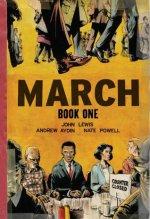
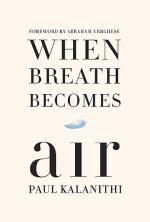
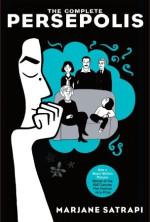
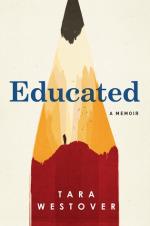
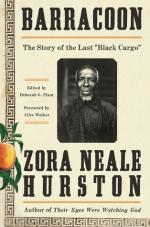
When Breath Becomes Air, by Paul Kalanithi, is about a young neurosurgeon dying of cancer. Kalanithi wrote this book in his final year of life and it was published after his death. This is a thoughtful book that is surprisingly polished considering it’s a first book by a surgeon and is written while he’s suffering terribly. Obviously, this is not a cheerful read but it’s not just a book about cancer (though it is partly that). It’s partly a memoir about Kalanithi’s upbringing and career in medicine. He’s interested in the brain but he’s also interested in the human condition, as understood in philosophy and literature. The book is also a look at the medical profession and what happens to a doctor who becomes a patient. I’m quite interested in neuroscience, as someone who works in education and understands how critical (and mysterious) brain development is, and also as a frequent migraine sufferer. The brain is truly fascinating, so Kalanithi’s work was quite interesting. The only difficulty I had with this book were the frequent descriptions of surgery, which I’m quite squeamish about. I guess I prefer books about brain research to books about brain surgery. But that wasn’t a huge part of the book. Is it a book I’d recommend to everyone? No, it’s a pretty unique mix of topics and you’d have to be pretty interested in both cancer and neuroscience to appreciate it. But I do think we can benefit from Kalanithi’s insights about medical practice and the connections between medicine and literature.
Educated, by Tara Westover, a recent release and current bestseller. Westover was raised in Idaho by fundamentalist Mormon parents who didn’t believe in public education, medical care, or government of any kind. This memoir is about Tara’s childhood, her life with her family, and her path to education, including a Ph.D from Cambridge University. This is a really thoughtful look at a subculture that very few of us understand, but it may be one that’s growing as people become increasingly distrustful of government, and as conspiracy theories are easily generated by television and social media. This book reminded me quite a bit of Hillbilly Elegy, although I’ll admit I felt less of a personal connection because Westover’s educational experiences didn’t remind me anything of my own. Although at the same time, her story of women being shamed, bullied and abused was chilling and I’m glad she’s been able to share it. Like Hillbilly Elegy, this book made me a little sad that I haven’t achieved more in my life, when these two people who faced so many setbacks were able to accomplish so much. I’m sure Westover’s story will inspire many people. I didn’t always love Westover’s writing style, and I thought she spent too much time on some things and not enough on others, but I never lost interest in her story.
The Complete Persepolis is a book I started months ago and struggled with. I knew I wanted to finish it though, and what I realized was that I just needed to set aside a good amount of time that I could really focus on it. Once I did I flew through it. Satrapi clearly wants the reader to understand what happened in Iran in the 80s, not just what happened to her personally. That makes the story a bit dense at the beginning, but the graphic novel and Satrapi’s breezy but heartfelt style makes the horrors she observed come to life. As I was reading this book I was reminded of a book I read last year, The Last Days of Café Leila – a book I didn’t care for but one that left the terror of Iran’s Islamic Revolution vivid in my mind. I also loved Marjane’s honesty and the personal nature of her story.
Similar to Persepolis is March (Book 1), a graphic novel written by Congressman John Lewis, Andrew Aydin and Nate Powell. It’s a memoir in the form of a graphic novel, but it’s also a depiction of a time and place in history. March is the story of the Civil Rights Movement in the 60’s, and how it developed its strategy of peaceful protest. John Lewis is an inspiration as a leader of that movement. Book 1 covers his childhood and the early days of the movement, including the march in Selma and working with Martin Luther King Jr. I think sometimes we believe MLK was the civil rights movement, and I liked that this book showed how many people came together to design strategies that would advance their cause. Lewis describes how the activists had to train to stay passive in the face of anger and violence, and those who couldn’t stay passive were asked not to protest. This is a really interesting and unique way to tell the story, and it’s one that will resonate with many people.
Most recently, I read Barracoon: The Story of the Last “Black Cargo” by Zora Neale Hurston. This is a short read but one with a fascinating history. Hurston interviewed Cudjo Lewis in 1927; Lewis was the last living person to have been brought over to the United States on a slave ship. Hurston felt it was important to get his story in his own words. Sadly, after writing this book, no one wanted to publish it, and it was left unpublished for nearly a century. When you read how much Lewis just wanted someone to know who he was, not just a slave or a former slave, but an African, that makes the history of this book even more poignant. Those who appreciated Homegoing will be interested in this book. This made me realize I’ve only read fictional accounts of the slave trade, never from someone who had actually experienced it. The use of dialect makes reading a bit challenging, but it’s worth it.
It’s worth noting that three of the five books I just described were chosen partly because of the Read Harder challenge, one I recommend to anyone looking to push themselves outside comfort zones a bit.
Do you read nonfiction, and if so, what types of nonfiction do you read? And what makes a nonfiction book really enjoyable for you?

